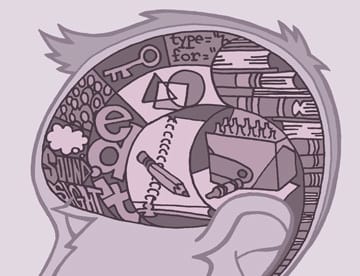- August 10, 2015
Get Hired
These are the markers for how we evaluate design candidates. I should point out that these rules, with the exception of #3, apply across the board, regardless of the role you’re applying for: development, project management, operations, etc. Admittedly, they’re not so unique to us. You’ll find with other studios’ or agencies’ hiring managers that processes will vary — what’s your experience? Tell us in the comments — but if you keep these rules in mind you’ll have a good shot with any people-first, quality-minded organization.

1. You have a point of view.
We look for writing samples, so with a good-enough introduction email (cover letter) you’re able to kill two birds. Be honest; tell us what drives you as a maker. We hire people, not their software qualifications. Avoid the temptation of the formulaic example letters you can find on sites like About.com. 95% of the letters we receive follow this format. They feel predictable and boring. Above all, make sure you address your letter to the right person. We don’t employ anyone named Whom It May Concern.
2. Your résumé is not an afterthought.
We’re not expecting to be knocked out of our socks by its layout. Minimally, it should be well typeset. Beyond that, we like consistent visual language applied across all your submissions, but you don’t need to go off and brand yourself. When communicating software proficiency, resist gumming up your CV with nonsensical infographics. Like the letter, they don’t warrant the attention. Show a professional’s restraint.
3. You sell your work.
For a designer, what we’re looking for is how you’ve reconciled brand and interface: can you bring a visual identity alive in the browser? Presentation layer, however, isn’t everything. Process has relevance. Show your work: wireframes, site maps, sketches, user flow diagrams; but don’t make too much of them. Ultimately the end result matters most of all. Also, be clear about your role on projects. Again, it’s a matter of being honest. I can’t overemphasize this point. We lean on each other quite heavily.
Lastly, a pet peeve: keep your desktop comps out of Apple displays. If your argument for doing so is context, use a browser. An Apple display can make near anything more beautiful. (Honesty! Ring that bell.)
4. You ask good questions.
Before the interview, schedules permitting, we may ask to Skype with you. There’s no set agenda or format; we’re just looking for a conversation. The quality of the questions someone asks can be revealing. This is true of any in-person one-on-ones as well.
5. You give a convincing presentation.
Our interview format changes often, but you can assume you’ll be speaking with most of our team, usually in a large-group setting. Ten to fifteen people around a long table. In the past, we’ve asked candidates to present for 10-15 minutes about themselves, followed by a presentation of their work. There are no ground rules, except for time. It’s ideal, though difficult if you can weave together both.
A good example that comes to mind: During her interview, Amanda Buck presented the case study of a pie shop she started with a few other designers in rural Alabama. They designed the physical space, designed the signage and posters, made the pies. Anecdotally, she mentioned some members of the small community objected to a poster they’d designed, so her team met with community members to hear and address their concerns. On the whole we were all charmed by her story. She told it well. But what really sold it was how she touched on responsibilities everyone in our diverse audience could relate to — project management, design, business development, ownership, operations, conflict resolution.
6. You follow up.
This is hugely important because it reiterates your interest. So write a letter, a real letter, to every individual you met with if you can, hitting on something the two of you actually talked about, not some banal “Thanks! Look forward to hearing from you!” That’s perfunctory, and perfunctory shows in your work.
TL; DR: Be thoughtful, beginning to end.